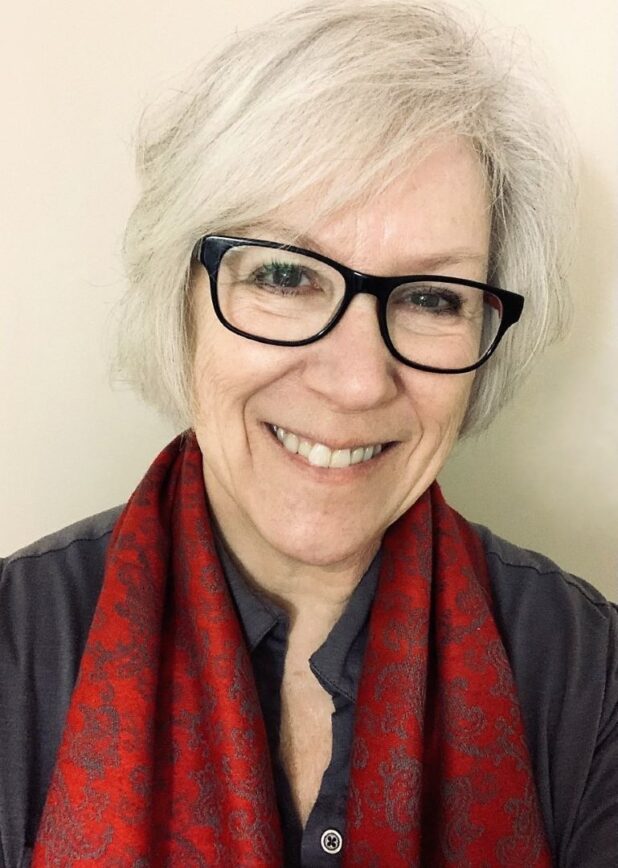I once went on a gal-pal horseback-riding weekend inside Wrangell-St. Elias National Park & Preserve. If you know me, you know how exceptional that is. Our fly-in camp destination was Horsfeld, and I, who fear horses and their hooves and muscle mass and their propensity for discharging me from the saddle, went along only because I loved my friends, Kris Capps and Sherry Simpson. Debbie Carter would have flown out with us, but she couldn’t make our latest “Wild Women” reunion. During breaks in our riding days, we were to meet in a spacious wall tent, sitting at the feet of guest author Pam Houston. I remember looking across at attentive Sherry resting on a raggedy couch, pen in hand, and I wondered what more she could possibly learn from our guest.
During those few days, we shared sweaty hours exploring trail-less routes, terrified me gripping the saddle horn on slopes that recalled The Man from Snowy River. We exchanged campfire stories, compared saddle-sore aches, consumed gourmet meals, and ended each day in a steam bath hut, then stretched out to dry our hair on warm rocks at streamside. We laughed a lot.
After the goodbyes, and without conferring, each woman generated something unique from that trip. I wrote a piece about this ride into Bush Alaska for the Travel section cover of the Sunday Oregonian; Sherry wrote a gorgeous personal essay, of course, in which collection it resides, I wish I knew; Kris produced some snappy text about the Horsfeld operation and its cowboys with a “How to Get There” sidebar for the readers of Ruralite. Each of us had a personal take on a shared experience, as unique as our fingerprints.
I think about that when comparisons come up, during my own self-doubts or when someone else makes an observation. I’ll never write a sentence with the mindful grace that Sherry did, or convey the passion of community like Kris does, but feedback tells me that my personal, reflective journalism delivers deeply researched storytelling in a voice that’s appreciated. “I like how Tricia talks,” was recent high praise for my newest book, The Queen of Fairbanks. “Amazing research!” said another. “I LOVE Irene!” texted a reader. I do, too.
I fell in love with Irene Sherman’s personality and tenacity as I spent the Covid years examining the life of this Alaskan icon, a burn victim, a raucous, Fairbanks-born bag lady who somehow lived until age eighty-four in one of the harshest places on the planet. I’d followed her for interviews in 1988 and written a magazine profile for both the Anchorage and Fairbanks Sunday magazines. Thirty years later, Irene re-entered my life when an email from a stranger, a long-lost relative in the Lower 48, dropped into my inbox. Fueled by curiosity, I pulled out my old notes and found myself entangled by the mysteries surrounding a long-dead woman. There was a “rest of the story.” Finding it gave me focus through the Covid years and the losses of first my sister, then my treasured friend, Sherry.
My interest morphed from “Let’s take a look around” to “Like a dog on a bone.” And old doubts returned. Was I really the right person to tell her story? There were so many others who’d do a better job. Would I do her memory a disservice?
Pandemic time floated, but tracing the unknowns of Irene’s story helped anchor me. I built out her family tree, chased interviews, studied old newspapers, and examined archival photos and history books every day. At times, I wept in front of my computer screen, stunned by some new, horrifying bit of information. With funding from a Rasmusson Foundation fellowship, I traveled to the state archives, back and forth to Fairbanks, and Outside to meet family that Irene never met. She delayed my sleep nearly every night for four years as the degrees of injustice and pain she’d endured were revealed. I also learned about Irene’s friends—many, many friends—who quietly ensured that she was looked after. Without show, people from all walks had provided shelter, delivered groceries, dropped off a load of coal, or bought her beer, plenty of Olympia beer. They treated Irene Sherman like the Queen she claimed to be. She belonged to the whole town.
The final manuscript, said one blurb writer, was part biography, part history, part mystery, part memoir. It was my thirtieth book, but it felt far more complex and important than the others. And I liked it.
I recalled a long-ago moment in a UAF journalism class, when Professor Jake Highton took a survey. “Anybody in here have a book in them?” he called out. “Raise your hand.” A dozen eager hands flew up, but not mine. I looked around, incredulous at their confidence. How could I? I thought. I haven’t lived enough.
And now it seems I’ve lived enough to witness extraordinary people shining through hard circumstances everywhere around me. Long enough to know that living is more than existing, writing is more than retelling, and comparison is not only useless, but it is destructive, undermining confidence as surely as sitting on a horse named “Widdermaker.”
From my place on the trail, I will offer this advice: Stay in the saddle, my friend, and ride your own ride.
Tricia Brown is an Anchorage-based author who has written many nonfiction books for adults and eleven books for children, nearly all on Alaska subjects and published through various regional presses. She holds a BA in journalism from UAF and an MFA in creative writing from UAA. In 2023, she was recognized by the Alaska Center for the Book with a CLIA Award for “Contributions to Literacy in Alaska.” To learn more about the Queen of Fairbanks and hear Tricia Brown give a reading, join us for our Reading & Conversation event at the Wasilla Public Library on October 8!

